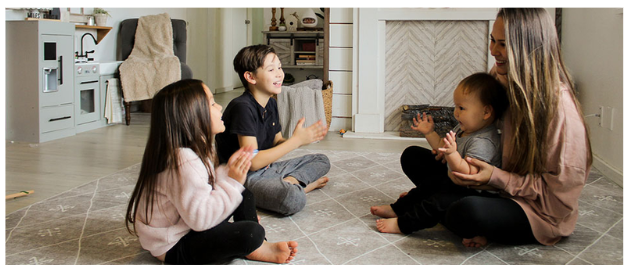Rainy days can be a test of creativity and patience for parents trying to keep their children entertained and engaged indoors. While the weather may dampen outdoor plans, it also provides an excellent opportunity for families to explore new activities that promote learning and development. Here are some creative strategies to help alleviate cabin fever and support your child’s growth.
Why not turn your home into a treasure island? An indoor treasure hunt is a fantastic way to keep children physically active and mentally stimulated. Create a map or a series of clues that lead to hidden treasures around the house. Tailor the hunt to your child’s age by incorporating educational elements like math problems or reading tasks. This activity encourages problem-solving skills and keeps kids engaged for hours.
Setting up arts and crafts stations around the house can turn a rainy day into a creative wonderland. Provide supplies such as paper, markers, glue, and recyclable materials. Encourage your children to let their imaginations run wild with themed projects or freeform art. Crafting not only enhances fine motor skills but also fosters creativity and patience. Plus, using recyclable materials can teach valuable lessons about sustainability and environmental responsibility.
Transform your kitchen into a laboratory with simple science experiments. Activities like creating a baking soda and vinegar volcano, making slime, or growing crystals are both fun and educational. These hands-on experiments introduce children to basic scientific concepts and the excitement of discovery. They also promote curiosity and critical thinking.
Encourage your child’s storytelling abilities by setting up a puppet theater. Use a cardboard box for the stage and craft puppets from socks or paper bags. Let your child create their own stories or reenact favorite tales. This activity boosts creativity, enhances language skills, and builds confidence in public speaking. It’s a wonderful way to spark imagination and enjoy quality time together.
Keep your children active by designing an indoor obstacle course. Use pillows, furniture, and toys to create challenges such as crawling under tables, jumping over pillows, and balancing on tape lines. This physical activity helps burn off energy and develops gross motor skills, coordination, and balance. It’s a fun and dynamic way to keep kids moving, even indoors.
Take advantage of educational apps and online resources that offer interactive learning experiences. Platforms like ABCmouse, Khan Academy Kids, and educational YouTube channels provide engaging content across various subjects, from math and science to reading and art. These resources ensure that screen time is both entertaining and informative, supporting your child’s educational development.
Turn your living room into a dance floor with a music and dance session. Dancing is an excellent way for children to expend energy and express themselves. Introduce simple musical instruments like tambourines or maracas to create a family band. This activity promotes physical activity, rhythm, and a love for music, providing a joyous outlet for children and parents alike.
Start a small indoor garden with easy-to-grow plants like herbs or succulents. This project teaches children about plant biology, responsibility, and the satisfaction of nurturing life. Allow them to decorate the plant pots, adding a personal touch to their mini-garden. Gardening indoors can be a calming and educational experience for kids.
About the Author


